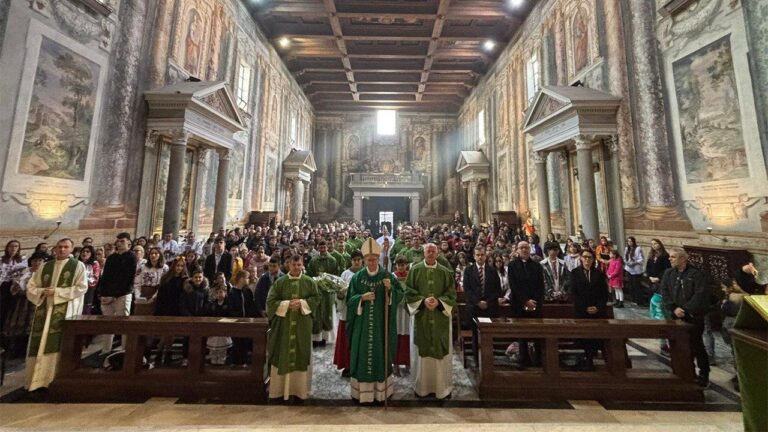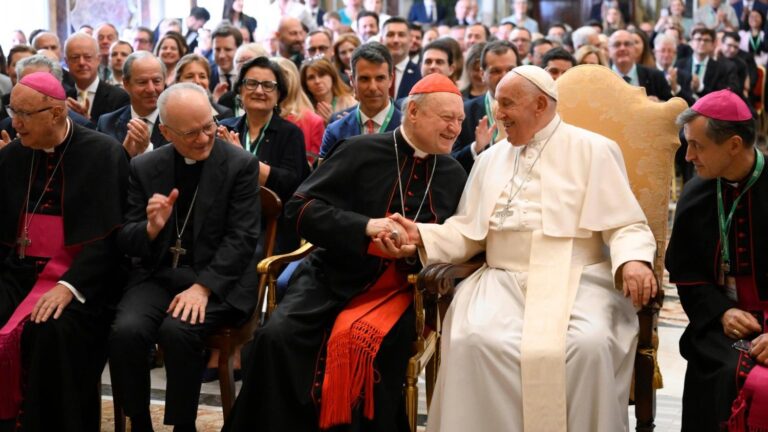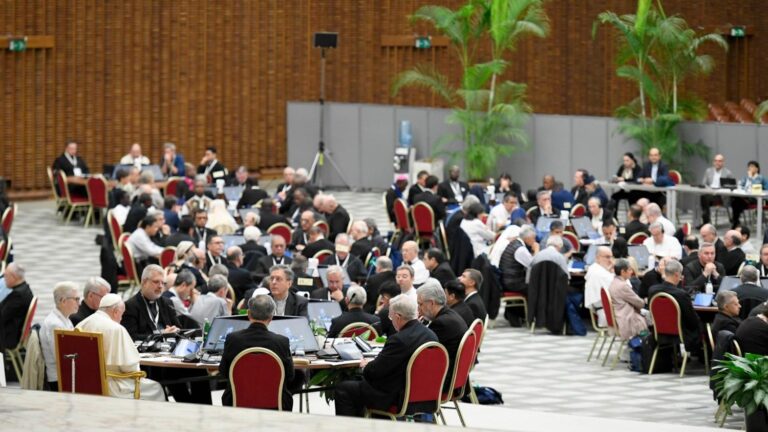Archbishop Peña Parra gives testimony at British High Court
The deputy secretary of state gave evidence at the British High Court in London in the civil case brought by financier Raffaele Mincione. He answered questions from Mincione's lawyer about financial dealings with broker Gianluigi Torzi and attempts to force him to cede control of the Sloane Avenue property.
By Salvatore Cernuzio, London
The two-and-a-half-hour interrogation in English at the High Court of Justice in London of Archbishop Edgar Peña Parra, substitute for the Secretariat of State, highlighted the details of the situation in which the real estate agent Gianluigi Torzi, convicted in the first instance by a Vatican court also for extortion, involved him and the Secretariat of State in the sale of the London building. Archbishop Peña Parra spoke of “lies and deception” until the end, feeling “trapped” and “forced” to accept Gianluigi Torzi’s demands to end all relations with him. He explained how the real estate agent, arrested in 2020 in the Vatican and soon released, received two invoices for £5 million and £10 million in the name of his companies Sunset Enterprise and Lighthouse to get out of the deal and hand over full control of the London building he owned to the Holy See. “I felt totally mocked,” Archbishop Peña Parra said in the only words spoken in Italian.
Questioning in court
The Sloane Avenue case and all the events related to it that took place since 2018 (the year the Venezuelan archbishop arrived at the Secretariat of State) occupied the entire hearing on the afternoon of July 4 in room 19 of the commercial section of the Superior Court. The small room was equipped with several wooden desks with numerous computers surrounded by files and boxes full of documents.
The current trial began on June 24, following a civil complaint filed four years ago by financier Raffaele Mincione. His lawyer, Charles Samek, however, made no reference, during the many questions he put to the prosecutor, to the transactions between Mincione and the Secretariat of State, the subject of the trial in London. Attention was focused solely on the relations with Gianlugi Torzi, the lawyer even going so far as to quote excerpts from the interrogation conducted by Archbishop Peña Parra in Rome with the broker's defenders.
“The Memo”
The archbishop was questioned from 2:00 p.m. to 4:30 p.m., assisted by an interpreter. He gave an account of the work he had done in this case, which, according to the Holy See’s lawyers in the defense brief, revealed a “sad story of corruption” by internal and external figures. He took an oath on the Gospel and, from a bench next to Judge Robin Knowles, submitted to Samek’s series of questions, beginning with the “memo,” that is, the approximately 300-page brief filed in the Vatican trial by the archbishop on June 2, 2020. The lawyer asked the deputy whether he had written it himself or whether he had been helped by others. “This is an informative memo,” the prelate explained, “prepared later in 2020 because at that time the Holy Father asked me to present a document or report on how I found the Secretariat of State after my arrival.” The “memo” was written with the help of the Administrative Office for which Bishop Alberto Perlasca was no longer responsible. This Office provided the Substitute with the documents and information useful for drafting the memo addressed to the Pope. Bishop Peña Parra also added that a consultant, Luciano Capaldo, had provided assistance with the parts relating to the building at 60 Sloane Avenue.
Information given to the Pope
In fact, as attorney Charles Samek noted, in one part of the memo, the Surrogate claimed to want to facilitate understanding of a “complex and multifaceted transaction” that had involved “a high level of financial, corporate and technical real estate knowledge.” The attorney speculated that the document in question was actually used to inform the pope of the transactions that had taken place at the London sale, when only partial information could have come from the Surrogate.
Archbishop Peña Parra repeated three times that this document was the result of a request from the Pope and affirmed that “my work in the Secretariat of State does not only concern the Administrative Office and things like that, I took time off to prepare this note that was addressed to the Holy Father.” “Excuse me, sir, can you tell me what are the things that I did not do with the Holy Father?” added the substitute. “I see the Holy Father every Tuesday… The information, I repeat, was only a note to explain to the Holy Father what happened in the Secretariat of State.”
Invoices in Torzi
Charles Samek recalled that this note had also been sent to the Office of the Promoter of Justice. In this case as in the previous one, according to him, relevant information had been omitted. “Why in this document prepared in complete transparency did you not mention the false invoice addressed to Torzi and sent to Credit Suisse?” he asked. These are the two aforementioned invoices for the transfers of 5 and 10 million pounds sent to Torzi to obtain the sale of the thousand voting shares that gave him real and total control of the building. The operation, in fact, that the Vatican judges have described as “extortion.”
These are “false” invoices, explained lawyer Charles Samek, who had copies of letters sent to Credit Suisse indicating reasons different from the real ones, opened simultaneously on the different computers in the courtroom. Like the one for 5 million pounds that reported “professional activities” rendered by Torzi to the State Secretariat for Real Estate in other cities. “Why?”
The answers
The substitute responded by reiterating, first of all, that it was a “broad memo” that did not only deal with the details of the London affair. He recalled that it had emerged from the Vatican procedures that Archbishop Peña Parra had already informed the pope in a memo in May 2019 when the agreement was concluded.
“I did not lie,” the archbishop said twice. He added: “The invoice was false, but I insisted, for the purpose of the transaction, to put a 'final, complete and final settlement' of all our contractual obligations. That's what I thought.” The invoice, however, had different wording and, according to Mincione's lawyer, in any case, the signature of the substitute.
“Trap”
Monsignor Peña Parra explained that many “technical details” were taken care of by the Administrative Office of the Secretariat of State. And he explained that he felt “trapped” by Torzi, who, through these schemes, could have continued to ask the Holy See for money. “How could one deal with these kinds of people? Until the end, it was only lies and deception. We were trapped because of the situation.”
The interrogation of Archbishop Peña Parra will continue tomorrow, July 5, in a morning and afternoon session.






